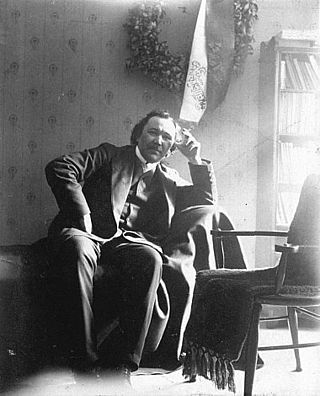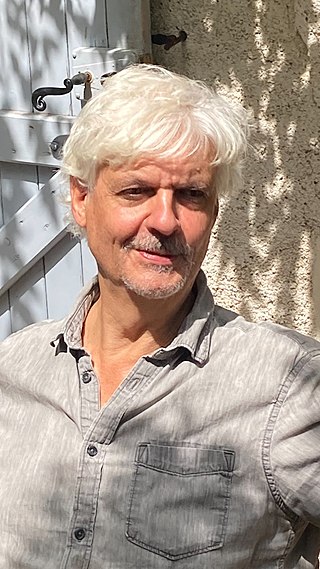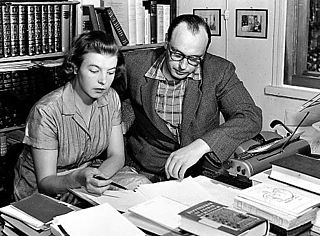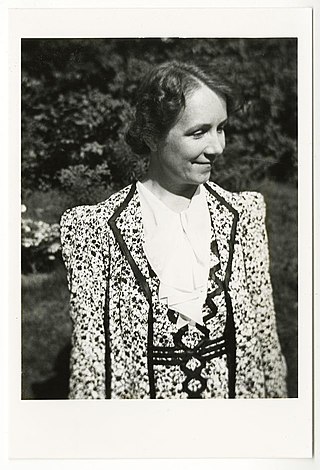Related Research Articles

William Carlos Williams was an American poet and physician of Latin American descent closely associated with modernism and imagism. His Spring and All (1923) was written in the wake of T. S. Eliot's The Waste Land (1922). In his five-volume poem Paterson (1946–1958), he took Paterson, New Jersey as "my 'case' to work up. It called for a poetry such as I did not know, it was my duty to discover or make such a context on the 'thought.'" Some of his best known poems, "This Is Just to Say" and "The Red Wheelbarrow", are reflections on the everyday. Other poems reflect the influence of the visual arts. He, in turn, influenced the visual arts; his poem "The Great Figure" inspired the painting I Saw the Figure 5 in Gold by Charles Demuth. Williams was awarded a posthumous Pulitzer Prize for Poetry for Pictures from Brueghel and Other Poems (1962).

Eino Leino was a Finnish poet and journalist who is considered one of the pioneers of Finnish poetry and a national poet of Finland. His poems combine modern and Finnish folk elements. Much of his work is in the style of the Kalevala and folk songs in general. Nature, love, and despair are frequent themes in Leino's work. He is beloved and widely read in Finland today.

Modernist poetry in English started in the early years of the 20th century with the appearance of the Imagists. Like other modernists, Imagist poets wrote in reaction to the perceived excesses of Victorian poetry, and its emphasis on traditional formalism and ornate diction.

Basil Cheesman Bunting was a British modernist poet whose reputation was established with the publication of Briggflatts in 1966, generally regarded as one of the major achievements of the modernist tradition in English. He had a lifelong interest in music that led him to emphasise the sonic qualities of poetry, particularly the importance of reading poetry aloud: he was an accomplished reader of his own work.

Trevor Joyce is an Irish poet, born in Dublin.

Pentti Saarikoski was a Finnish poet. He is considered one of the most important poets in the literary scene of Finland during the 1960s and 1970s. His body of work comprises poetry and translations, among them such classics as Homer's Odyssey and James Joyce's Ulysses.

Finnish literature refers to literature written in Finland. During the European early Middle Ages, the earliest text in a Finnic language is the unique thirteenth-century Birch bark letter no. 292 from Novgorod. The text was written in Cyrillic and represented a dialect of Finnic language spoken in Russian Olonets region. The earliest texts in Finland were written in Swedish or Latin during the Finnish Middle Age. Finnish-language literature slowly developed from the sixteenth century onwards, after written Finnish was established by the bishop and Finnish Lutheran reformer Mikael Agricola (1510–1557). He translated the New Testament into Finnish in 1548.
Suomen Kuvalehti is a weekly Finnish language family and news magazine published in Helsinki, Finland.

Stephen Romer, FRSL is an English poet, academic and literary critic.

Alli Hagar Olsson was a Swedish-speaking Finnish writer, literary critic, playwright and translator.

Tuomas Anhava was a Finnish writer and recipient of the Eino Leino Prize in 1989.

Kaarlo Sarkia was a Finnish poet and translator who was influenced by romantic poetry. His poems include motifs like childhood memories, love, landscapes and dreamworld, and in his last collection of poetry also his personal death and mankind's sufferings. Together with Uuno Kailas, Sarkia was the most prominent Finnish poet of the 1930s. As Kailas, his poetry also had homosexual themes.
Nuori Voima is a Finnish literary and cultural magazine which has been published since 1908. It is headquartered in Helsinki, Finland. Both the magazine and its parent organization, Nuoren Voiman Liitto, are among the well-respected institutions in Finland.
Shamshad Majitovich Abdullaev was an Uzbek poet, essayist, writer, and translator who wrote in Russian. He was the founder of the Fergana Poetry School.
Heli Pauliina Laaksonen is a Finnish poet.

Ruth Helena Anhava was a prolific Finnish poet, author and translator. Her translations include novels, plays, lyrics and dozens of auditions.

Elsa Elina Enäjärvi-Haavio, also Elsa Eklund, (1901–1951) was a Finnish folklorist who carried out extensive research into folk poetry in the 1930s. As a result, in 1947 she was appointed docent of Finnish and folk poetics at the University of Helsinki. She was an influential member of many organizations, including the Finnish Federation of University Women, for which she represented Finland at the 30th anniversary of the International Federation of University Women in Switzerland.
Tilanne was a monthly leftist magazine published in Helsinki, Finland, in the period between 1961 and 1967. It was one of the magazines funded by the CIA through the Congress for Cultural Freedom (CCF) during the cultural Cold War.
Ultra was an avant-garde bilingual art and literature magazine which appeared in Finland in 1922. Its subtitle was tidskrift för ny konst och litteratur. Although it produced only eight issues, it played a significant role in the introduction of avant-garde literary approach in the region.
Tuli & Savu is a poetry magazine based in Helsinki, Finland. It has been in circulation since 1994.
References
- ↑ Tatu Henttonen (Fall 2006). "Poetry Blogging in Finland". University of Tampere . Archived from the original on 25 January 2007.
- 1 2 3 Janna Kantola (2008). "Ezra Pound as a Persona for Modern Finnish poetry" (PDF). In Massimo Bacigalupo; William Pratt (eds.). Ezra Pound, Language and Persona. Genova: University of Genoa. p. 138.
- 1 2 3 4 Juhana Rossi. "Letter from Finland". Context (17). Archived from the original on 7 February 2014.
- ↑ Jan Sjåvik (2006). Historical Dictionary of Scandinavian Literature and Theater. Lanham, MD; Toronto; Oxford: Scarecrow Press. p. 229. ISBN 978-0-8108-6501-3.
- 1 2 3 "Matti Suurpää: Parnasso 1951-2011 (a book)". Antti Alanen blog. 10 July 2011. Retrieved 14 November 2014.
- ↑ "Parnasso". Aikakaus Media. Archived from the original on 29 November 2014. Retrieved 14 November 2014.
- 1 2 3 Seppo Suominen (2021). "Public Library Borrowing, the Case of Helsinki Region". First Look. doi:10.2139/ssrn.3926079. S2CID 237580471.
- 1 2 Janna Kantola (2016). "Making Choices – Debatable Translations and Publication Policies of Finnish Cultural Magazines". In Tania Ørum; Jesper Olsson (eds.). A Cultural History of the Avant-Garde in the Nordic Countries 1950-1975. Vol. 32. Leiden; Boston: Brill Rodopi. pp. 338–339. doi:10.1163/9789004310506_033. ISBN 9789004310506.
- 1 2 H. K. Riikonen (2007). "Modernism in Finnish Literature". In Astradur Eysteinsson; Vivian Liska (eds.). Modernism. Amsterdam; Philadelphia, PA: John Benjamins Publishing Company. p. 850. ISBN 978-90-272-9204-9.
- ↑ Marek Fields (2015). Reinforcing Finland's Attachment to the West: British and American Propaganda and Cultural Diplomacy in Finland, 1944-1962 (PhD thesis). University of Helsinki. pp. 309–310. hdl:10138/153952.
- ↑ "Finland's 'Moomins' conquer the world". The Daily Star . 8 August 2014. Archived from the original on 9 August 2014. Retrieved 14 November 2014.
- ↑ "Circulation Statistics 2011" (PDF). Media Audit Finland. Archived from the original (PDF) on 25 July 2019. Retrieved 13 December 2014.
- ↑ "Circulation Statistics 2013" (PDF). Media Audit Finland. 23 June 2014. Archived from the original (PDF) on 29 March 2017. Retrieved 4 April 2015.